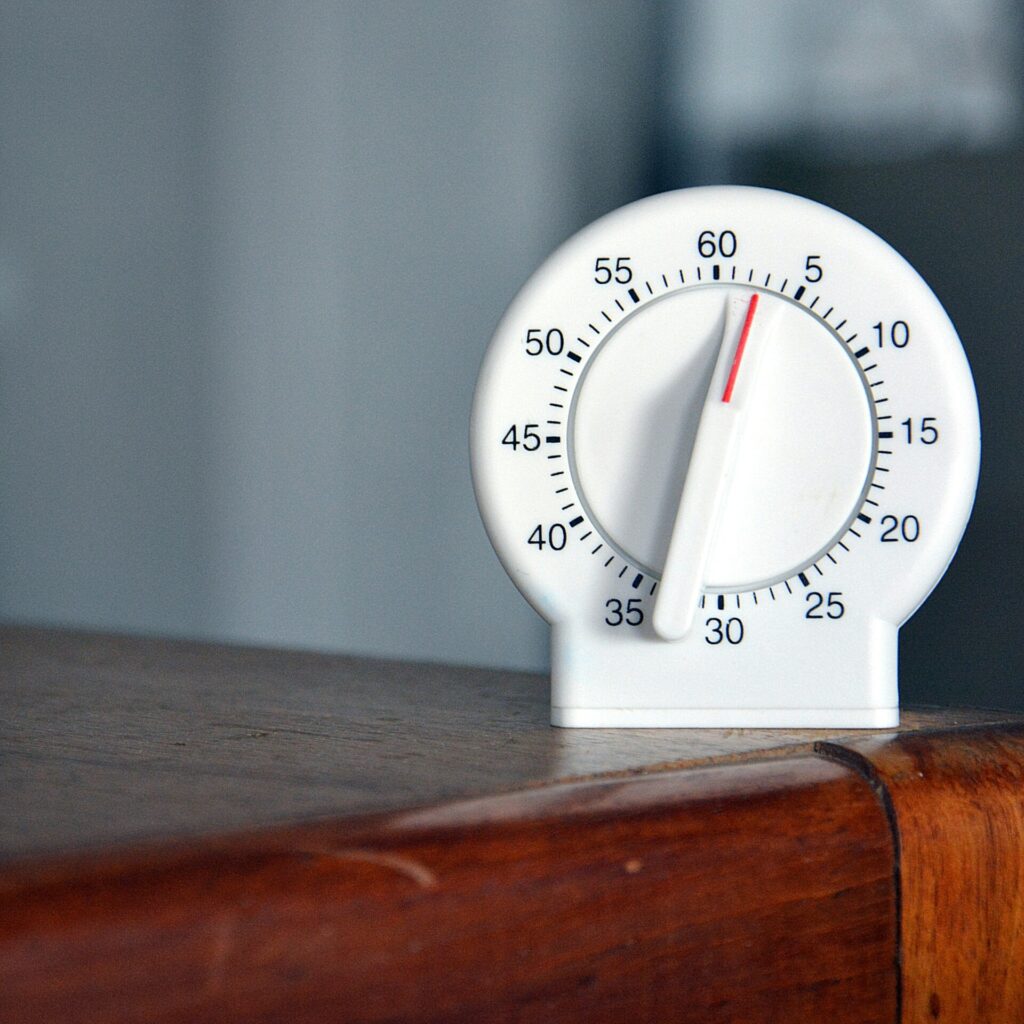While hemorrhoids (also called piles) can develop for many different reasons, these distended veins in and around the rectum are more common in individuals who are overweight or obese. But why do piles form in the first place? And what’s the connection between obesity and hemorrhoids? Here’s what you need to know.
How and Why Hemorrhoids Form
Hemorrhoids can form internally or externally (around, outside or inside your rectum or anus). Due to slow or poor blood circulation, these veins become distended and painful and can even bulge out of the rectum and anus to the outside of the body. But what causes hemorrhoids? Basically, anything that puts pressure on the veins in and around your rectum can cause hemorrhoids to form. As such, factors such as constipation and pregnancy can increase your risk for internal or external piles. Often, obesity and hemorrhoids also go together, because carrying excess weight also increases pressure on your anus and rectum.

Hemorrhoid Symptoms
We categorize piles diagnoses on a grade from 1 to 4, based on how far they prolapse into or out of the anal canal. But common concerns include:
- Pain
- Itching
- Swelling
- Bleeding, especially when passing bowel movement
- Prolapsed hemorrhoids
- In severe cases, fecal leakage
Obesity and Hemorrhoids: Further Exploring the Connection
As mentioned earlier, simply carrying extra weight can increase pressure on your rectum to the point where hemorrhoids may develop. But the connection may be more complex. After all, some individuals who are obese also follow diets that are low in healthy fibers, but higher in sugar and carbohydrates. In turn, they may become constipated, further increasing the chances for hemorrhoids to develop.
Furthermore, when you are obese, you tend to be less active. And, since studies suggest that inactivity can damage muscles in your rectum and anus, reducing your activity levels can further increase your hemorrhoid risk. Luckily, even if you are obese, you can engage in hemorrhoids prevention by following these simple suggestions.
Habits to Reduce Obesity and Hemorrhoids Risk
While you can’t always protect yourself from piles, the following lifestyle measures can dramatically reduce your risk for developing swollen veins in and around your rectum:
- Exercise for at least 30 minutes each day
- Increase your fluid and fiber intake
- Reach and maintain a healthy weight
- Avoid sitting on the toilet for extended periods of time
Obesity and Hemorrhoids: Help is Available
Even if you have developed hemorrhoids, help is available. And the best treatment option for your needs will depend on the severity of your symptoms along, with your hemorrhoid grade diagnosis. If you have grade 1 hemorrhoids, you may find relief from soaking the affected area in a warm, shallow bath. Over the counter topicals may also soothe your symptoms. However, if you have grade 2 or 3 hemorrhoids and obesity, you may need further intervention in order to experience symptom relief. In such cases, we invite you to request a consultation request a consultation request a consultation with our specialists at the Texas Hemorrhoid Institute. The interventional radiologists at our six Houston and Dallas area locations provide non-surgical hemorrhoid relief via Hemorrhoid Artery Embolization (HAE). When you come into one of our offices, we can review your candidacy for this minimally-invasive procedure and start you on the path to hemorrhoid relief!
Hemorrhoids are a common concern impacting millions of individuals around the world. While you may develop internal or external hemorrhoids, internal ones can be more complex to relieve, because they involve a network of blood vessels known as your corpus cavernosum recti (CCR). As such, seeking a lasting treatment option for internal hemorrhoids was once a major challenge. But, today, we can treat them with hemorrhoid embolization, (also called hemorrhoid artery embolization or HAE), providing lasting relief from symptoms such as chronic bleeding or prolapsing.

What is hemorrhoid embolization?
Embolization treats internal hemorrhoids by reducing blood flow to the area. The process works simply but beautifully. Doctors insert a catheter via a small incision, directing it to the vessels feeding your hemorrhoids. Once in place, they deposit embolic material that reduces blood flow to the area. In turn, the hemorrhoids shrink without damaging the surrounding tissue. The process relieves hemorrhoid symptoms without increasing your risk for side effects such as anal incontinence or rectal wounds. Still, the question remains: how long does the relief from hemorrhoid embolization really last?
How long does hemorrhoid embolization last?
According to research, HAE’s technical success rate sits at an incredible 95%. However, evidence does suggest that the procedure works best for patients with grade 2 and 3 internal hemorrhoids. As such, patients with grade 4 symptoms may not find relief through HAE, and may need to seek alternative treatments, such as hemorrhoid removal surgery.
Now, as we mentioned earlier, HAE is still a relatively new treatment option for internal hemorrhoids. As a result, we don’t have lots of long-term data on how long you can expect its results to last. Still, with the currently available data, we can report that up to 75% of patients are still experiencing significant symptom relief one year (12 months) after the procedure. Plus, since HAE is a non-surgical procedure, patients may undergo treatment multiple times, without general anesthesia or overnight hospital stays. And, since it’s also considered the least invasive treatment option for grade three internal hemorrhoids, those results should be promising for patients who would like to avoid surgery, or who are not medically cleared to undergo more invasive procedures.
Choosing HAE in Texas
Our interventional radiologists in Texas perform HAE for patients with grade 2 and 3 internal hemorrhoids, allowing for faster recovery times; reduced pain; and minimal discomfort following your procedure. Want to see if you’re a candidate for hemorrhoid embolization at the Texas Hemorrhoid Institute? Click here to request a consultation Click here to request a consultation Click here to request a consultation at one of our six clinics in the greater Houston and Dallas regions.
Want to get rid of hemorrhoids? Most people do: these swollen veins in or around your rectum can cause symptoms such as pain, itching or even bleeding when you pass a bowel movement. But, with so many potential treatment options available to patients, many people struggle to find their best pathway to relief. So, how can you choose the right hemorrhoid treatment option? Keep reading to find out.

3 Ways to Get Rid of Hemorrhoids Safely and Effectively
Depending on the location and severity of your hemorrhoids, you may be able to find symptom relief with simple lifestyle changes, like following a special diet and practicing self-care to soothe existing inflammation.
If symptoms persist? Try applying an over-the-counter, topical cream for hemorrhoids. If your symptoms are mild, this treatment option should provide sufficient relief. However, if you have stage 2 or 3 hemorrhoids, you may need a treatment option that can't be found at the drugstore. And that is when you may wish to explore a medical procedure known as Hemorrhoid Artery Embolization, or HAE in Texas.
Medical Procedure to Get Rid of Hemorrhoids
Before we had advances in interventional radiology, patients with severe hemorrhoid symptoms needed to undergo a surgical procedure to find relief. But, today, you can choose HAE, a procedure that reduces blood flow to your hemorrhoids by depositing embolic materials in your arteries, aided by x-ray imaging and the insertion of a catheter. The procedure allows you to avoid general anesthesia, invasive surgery and overnight hospital stays. It's also associated with fewer side effects and complications than hemorrhoid removal surgery.
Ready to get rid of hemorrhoids, but hoping to avoid surgery? Click here to request an appointmentClick here to request an appointmentClick here to request an appointment at the Texas Hemorrhoid Institute. Together, we'll explore your treatment options and help determine whether you're a candidate for HAE!
Many people hope to find relief from itching and discomfort by using cream for hemorrhoids. And, for mild cases of hemorrhoids, such over-the-counter products may provide symptom relief. Recently, however, one woman in California purchased a dangerous topical hemorrhoid product on the internet, sadly paying for that decision with her life.

Dangerous Cream for Hemorrhoids
When living with hemorrhoids, some people seek relief with drugstore products such as Preparation H with lidocaine or Recticare cream. But one woman in California recently decided to pursue a more 'natural' treatment option. So she went online and purchased a Vietnamese herbal product called Cao Boi Tri Cay Thau Dau.
Tragically, after using the cream, she died. Later, when authorities tested the cream to learn the cause of her death, they discovered that it had a 4% lead content. Simply by seeking relief for hemorrhoid symptoms, the poor woman had given herself a case of fatal lead poisoning.
Lasting Relief for Painful Piles Symptoms
Of course, this woman's story is, thankfully, extremely rare. And, if you stick to trusted cream for hemorrhoids brands, available in reputable drug stores, you are unlikely to face any danger. However, for people with moderate to severe hemorrhoid symptoms, topical treatment options are unlikely to provide much relief.
So, if you're suffering from symptoms such as bleeding with bowel movements, itching and discomfort, can you find relief without surgery? Today, thanks to a medical procedure known as Hemorrhoid Artery Embolization (HAE) you can recover from stage 2 and 3 internal hemorrhoids without invasive surgery or overnight hospital stays. Ready to learn more? Click here to request an appointmentClick here to request an appointmentClick here to request an appointment at the Texas Hemorrhoid Institute.
If you've been living with the discomfort of internal hemorrhoids, you may be hoping to relieve your pain in the privacy of your home. Now, some people with hemorrhoids will only recover with the help of a medical intervention. But, for those with less serious conditions, these at-home measures can help with managing hemorrhoids.

Managing Hemorrhoids: A 4-Step, At-Home Guide
Ready to adopt the lifestyle changes you need to relieve hemorrhoid symptoms such as itching, pain and bleeding with bowel movements? Here's what you need to do!
Increase fiber intake
As part of a hemorrhoid-friendly diet, eating more fiber-rich foods can help with managing hemorrhoids by softening your stools, making it less likely that you'll have to strain to pass a bowel movement. And, since straining can lead to hemorrhoid formation, this decision could both reduce existing symptoms and prevent new problems from developing.
Try hydrotherapy
You may be able to relieve your hemorrhoids by soaking your perineum in a warm bath. Infuse the water with Epsom salts and stay put for at least 15 minutes. Once you're done, gently pat dry the affected area, making sure to avoid rubbing since that could further irritate the delicate skin.
Get off your butt
Another cause of hemorrhoids is sitting too long--on the toilet, but on other hard surfaces as well. You see, hemorrhoids are jus swollen veins. And, like all veins in trouble, putting extra pressure on those hemorrhoids will make your symptoms worse. So, to enjoy some symptom relief, make sure to limit your time sitting on the toilet, in the car, or even at your office desk.
And sweat some, too
People with hemorrhoids can enjoy several benefits by engaging in regular exercise. First, more movement gets you off your seat (see our point above.) Next, exercise can sometimes help resolve constipation. Plus, workouts can help you reach your ideal weight. And, since obesity may contribute to hemorrhoids, adding exercise to your routine may provide additional relief.
Managing Hemorrhoids Medically
While lifestyle measures may effectively relieve your symptoms, patients with stage 2 or 3 internal hemorrhoids will likely need medical intervention to treat their condition. Have you been experiencing bleeding, itching or discomfort and you want relief from hemorrhoids without invasive surgery? Click here to request an appointmentClick here to request an appointmentClick here to request an appointment with our hemorrhoid specialists in Texas, to see if hemorrhoid artery embolization (HAE) is your pathway to relief!
If you're living with hemorrhoids, changing your diet could help. After all, spending too long on the toilet and straining to pass bowel movements are both risk factors for these swollen rectal veins, so changing the way you eat may speed things up in the bathroom, helping you feel better. So, what's the best diet to help hemorrhoids? Keep reading to find out.

Following a High Fiber Diet to Help Hemorrhoids
If you have hemorrhoids, following a high-fiber diet may help you manage your symptoms by allowing for softer stool that's easier for you to pass. Here are some of the best foods to include in your meals:
- Whole grains, including bran and shredded wheat
- Fruits such as pears, apples, prunes and raspberries
- Veggies, especially green peas, collard greens, sweet potatoes and winter squash
- Navy, pinto and/or kidney beans
Additionally, increasing your daily water intake and engaging in regular exercise can help prevent or relieve hemorrhoid symptoms.
When to Seek Further Intervention
For people with mild to moderate hemorrhoids, simple lifestyle changes may provide sufficient symptom relief. However, people with stage two or three internal hemorrhoids experience itching, discomfort, or bleeding with bowel movements. And so, to find lasting relief, you're likely to need additional medical support.
Luckily, when a diet to help hemorrhoids isn't working, the experts at the Texas Hemorrhoid Institute are ready to dive in! Our interventional radiologists perform a procedure known as HAE, or hemorrhoid artery embolization. This minimally-invasive treatment option provides relief by reducing blood flow to your hemorrhoids. Shortly after, they shrink and disappear. And so do your symptoms!
In contrast to surgical treatment options, patients who choose HAE experience fewer complications and a shorter recovery period. Ready to see if HAE is the right treatment for you? Click here to request an appointmentClick here to request an appointmentClick here to request an appointment
Sitting on the toilet for too long can take a major toll on your health. But why is that the case? Here's what you need to know.

Sitting on the Toilet for Too Long: What's the Problem?
When you sit on the toilet for an extended time period, you compress some of the nerves in your perineum. (The portion of skin between the anus and scrotum for men, or the anus and vulva for women.) So, right off the bat, you may experience numbness in the area. And, your feet and legs could even start tingling once you stand up after finishing your business.
Moreover, when you're sitting too long on the toilet, you put a lot of pressure on your anus and rectum. That's true whenever you sit for too long, but perching on the toilet adds extra pressure to the area because the cut out center of the seat allows the rectum to sit lower than your buttocks. And, with all that pressure, you're more likely to develop hemorrhoids.
What are Hemorrhoids?
Hemorrhoids are simply veins in your rectum that become enlarged. But why does the pressure of sitting too long on the toilet increase your risk for these enlarged veins? Well, when you're sitting down, the force of gravity allows blood to pool in your rectal veins. That puts pressure on the veins, impeding blood flow and allowing them to bulge. Soon, you may experience symptoms such as pain, itching or bleeding when you pass a bowel movement. (That last symptom is associated with internal hemorrhoids, which form inside your rectum.) At that point, it's time to seek relief with hemorrhoid treatment.
Internal Hemorrhoid Relief in Houston and Dallas
Been sitting on the toilet too long and now you're experiencing unpleasant internal hemorrhoid symptoms? We're here to help! Click here to request an appointmentClick here to request an appointmentClick here to request an appointment with our interventional radiologists at the Texas Hemorrhoid Institute. When you come in, we'll review your minimally invasive treatment options!
Here at the Texas Hemorrhoid Institute, we treat stage 2 and 3 internal hemorrhoids using a minimally invasive procedure called Hemorrhoid Artery Embolization (HAE). But how can you know when to seek treatment for hemorrhoids? And why do you get these uncomfortable bulging rectal veins in the first place? Keep reading to find out.

What are hemorrhoids?
Hemorrhoids are inflamed, bulging veins that form inside your rectum or around your anal opening. Ranging in severity from mild to severe, they can cause a variety of symptoms including itching and bleeding.
What causes hemorrhoids to form?
Hemorrhoids may form if you follow a low-fiber diet, strain to pass bowel movements, sit for too long (especially on the toilet), are pregnant, are obese, or lift heavy objects using an incorrect form.
Hemorrhoids can be internal (forming inside your rectum) or external, forming under the skin surrounding your anus. Often, external hemorrhoids cause more pain, but internal hemorrhoids may cause more worrying symptoms, including bleeding when passing a bowel movement.
When to seek treatment for hemorrhoids
When your hemorrhoids cause mild symptoms, you may be able to manage your condition with lifestyle changes. Suggestions including increasing your fiber and water intake, or using over-the-counter stool softeners and hemorrhoid creams.
However, if your condition is making you bleed before, during or after you pass a bowel movement, that’s when to seek treatment for hemorrhoids. You should also seek intervention if your symptoms persist for longer than a week, or if symptoms are worsening.
Also, if you notice a bulge in or around your rectal area, that could be a prolapsed hemorrhoid that’s fallen out of your anus. If you can’t easily push it back inside the anus, you should seek treatment for hemorrhoids. Finally, if any of your symptoms are causing you distress or ongoing discomfort, we encourage you to click here to request an appointmentclick here to request an appointmentclick here to request an appointment with our hemorrhoid experts in Texas. In the office, we can review when to seek treatment for hemorrhoids, and determine if you’re a good candidate for HAE.
When you have internal hemorrhoids, you may experience symptoms such as bleeding with bowel movements. In most cases, that blood is unpleasant, but not a medical emergency. But sometimes, that blood could be a sign of a bigger problem. So, what are the dangers of bleeding hemorrhoids? And how can treatment help? Keep reading to find out.
What Types of Hemorrhoids Bleed
Hemorrhoids can be internal, developing inside your rectum, or external, forming around the opening of your anus. Both can bleed, but bright red blood when you pass stool is a more common symptom of internal hemorrhoids. While the bleeding is not usually dangerous, these internal hemorrhoids can be itchy and painful, causing you to seek treatment.

Why Hemorrhoids Bleed
There are several reasons why hemorrhoids may bleed. Most commonly, straining to pass stool can damage the surface of your enlarged blood vessel, causing bright red blood to appear on your toilet paper. However, in some cases, an overly full hemorrhoid may burst, causing more serious bleeding. Rarely, hemorrhoids can damage the skin surrounding them, causing bleeding or even skin cell death. Ideally, by seeking timely intervention for hemorrhoids, you can avoid this medical complication.
Dangers of Bleeding Hemorrhoids
When is it dangerous to have a bleeding hemorrhoid? The problems can begin if a blood clot forms inside the hemorrhoid, becoming thrombosed. Because thrombosed hemorrhoids can rupture, causing you to bleed heavily, it's important to seek immediate medical attention for this condition. Or, better yet, seek hemorrhoid treatment early enough to prevent thrombosis.
Treatment to Prevent Dangers of Bleeding Hemorrhoids
If you already notice blood in your toilet bowl or on your toilet paper when you pass a bowel movement, now is the time to seek treatment for internal hemorrhoids. At the Texas Hemorrhoid institute, we treat stage two and three internal hemorrhoids with hemorrhoid artery embolization (HAE), a minimally invasive procedure that relieves your condition by limiting blood flow to the troubled veins.
Ready to stop worrying about bleeding hemorrhoids? We're ready to help relieve your discomfort! Click here to request an appointmentClick here to request an appointmentClick here to request an appointment with our hemorrhoid specialists in Texas.
If you've been living with internal hemorrhoids, you may already be dealing with painful, disruptive symptoms. And that may be impacting several areas of your life. But if you're wondering, can you have intercourse with hemorrhoids, here's what you need to know.

What are hemorrhoids?
Hemorrhoids (or piles) are just enlarged veins in your rectum or anus. Sometimes, the walls of these vessels stretch very thin, causing bulging and irritation in the veins. Now, we classify your hemorrhoids according to the severity of your symptoms. You'll be diagnosed with:
- Grade 1 hemorrhoids
if they are small, and not visible or palpable. While unlikely to cause discomfort, they may cause bleeding when you pass a bowel movement. - Grade 2 hemorrhoids
are larger, and may pop out of the anus when you pass a bowel movement. Symptoms can include pain, itching and bleeding. - Grade 3 hemorrhoids
are internal vessels that bulge outside your anal canal, and will not return unless you reposition them manually. They are also symptomatic. - Grade 4 hemorrhoids
are the most severe. The bulging vessels will stay outside the anal canal, even if you manually reposition them, and your symptoms are likely to be severe.
Can you have intercourse with hemorrhoids?
With more severe hemorrhoids, intercourse (either vaginal or anal) may be painful. Now, while this may prevent you from connecting with penetration, that doesn't mean you'll have to avoid intimacy altogether. Instead, you and your partner may need to find other ways to express your intimate connection. Then, once you relieve your discomfort with hemorrhoid treatment, you can return to your former sexual connections, following your recovery period.
Hemorrhoid Treatment in Texas
Here at the Texas Hemorrhoid Institute, we treat grade two and three internal hemorrhoids with Hemorrhoid artery embolization (HAE), a non-surgical procedure that relieves your symptoms with a fast recovery, reduced risk for side effects and minimal discomfort.
Wondering if you can have intercourse with hemorrhoids despite your pain, itching and bleeding? You may be able to connect with penetration without treatment. But you're more likely to enjoy intercourse, and the rest of your daily activities, by seeking relief via treatment. Ready to begin your recovery journey? Click here to request an appointmentClick here to request an appointmentClick here to request an appointment with our hemorrhoid experts in Texas.







